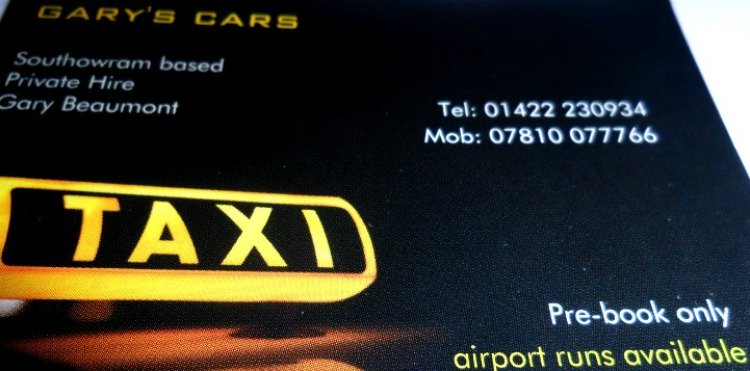Southowram-Bits and Bobs
Southowram Bits and Bobs
Early trades in Southowram around 1810

So much information in just one article. Early employment in Southowram.
Population - 4256 included what is now Siddal, Cromwell, Walterclough, Brookfoot, Bank Bottom and Shibden.
Where was the 'Single Sisters' pub?
Where was Chequer Inn? It's been suggested that this was the 'Manor House'?

An old ledger was found in the Social Club in 1983 which detailed life in the village in the 1920's and the second world war. (Does anyone know where this is?)
The book apparently reveals the activities in the life of the club and the days of public bathing, spittoons and yearly 'At Homes'.
In those days, very few people had private bathrooms and the club provided bathing facilities for everyone in the village at a cost of three old pence for two people with their own soap and towel.
In May 1924, a stern moral ruling was introduced stating that no two persons over the age of 12 years were to be allowed in the same bath together.
As you climb Southowram Bank, about 100 yards up, look over the wall and you can see the train lines leaving Halifax station and head under the hill towards Shibden Valley. This is the tunnel entrance.
 |
 |




Unusually large Coping stones on Binns Top Lane

Southowram Old Guard
William Earnshaw Leppington 1848-1911



Broad Street outside the Town Hall buildings

Same view today
Fairfax Prefabs
From 1946: 31st
august
Housing crisis: squatters take over army camps
ON A Sunday afternoon in September, two men and their wives strode into the former Withinfields Army camp in Law Lane, Southowram, and installed themselves in one of the deserted buildings. By the end of the week, they had been joined by 16 families who had taken up residence in 15 of the 36 huts - without permission.
It was not the only
squatters’ camp in the area. Families were also moving into the
redundant huts at Birds Royd, Rastrick, which had once been occupied
by the Royal Army Ordnance Corps. Nor was the phenomenon
confined to this district. Throughout the country, thousands were
claiming squatters’ rights in deserted military camps as Britain
found itself in the grip of an acute housing shortage.

During the war, hardly any new houses had been built while the new Labour government was struggling to keep its post-war election pledge of building 200,000 new homes a year - partly because many building labourers were still awaiting de-mob and also because Aneurin Bevan, the minister responsible for health and housing, was determined that quality of public housing should come before quantity.
The problem was further compounded by a baby boom which had increased the population by one million. The shortage of accommodation as ex-servicemen were reunited their wives and young children meant that many families found themselves living relatives which was far from ideal. The squatters’ actions often found backing from official quarters. Coun F. Palmer told Brighouse Town Council that the squatters in their area were decent and respectable people and with one exception, were residents of Brighouse Borough. He did not know what the council could do about the situation and he wished the squatters “good luck”.
In fact, a few weeks later, Brighouse Corporation took possession of the camps and agreed fixed charges with the squatters of between 6s and 9s a week. Those families who were able to move into their own homes were regarded as lucky. At the beginning of September, for example, Mr and Mrs E.F. Smelt, and their two children aged two and four became the first family to move into the first Halifax Corporation house to be completed under its post war schemes.
As they moved into
their home in Cousin Lane, Ovenden, it marked the end of a five year
wait. Mr Smelt, who worked at Denham Engineering Co, Holmfield, had
previously served in the Army for nine years.
Prefabricated bungalows offered a temporary solution for thousands of families around the country and by the end of September, the first “prefabs” were being erected at Haley Bank, Haley Hill, Halifax. Made of plasterboard and aluminium by aircraft manufacturers, they arrived in kit form in four three-ton sections which were lifted into place by a mobile crane.
The first prefab was put into place in just one hour by 12 men and by the end of the week, five more had been erected - had the site been level and the weather better, more would have been put up during that time. The prefabs featured kitchen fittings, a wardrobe and plenty of cupboards and were much loved by their new occupiers.
Mr and Mrs George Kaye and their eight-month-old daughter were among the first residents in Haley Bank, having realised their ambition to have a place of their own. The couple had married in 1940 but while Mr Kaye served with the Royal Armoured Corps during the war, Mrs Kaye had continued to live with her parents. They could find no fault with their new home and although it was one of the few without central heating, they could find no suspicion of the “sweating” which was said to be one of the disadvantages.
Although pre-fabs were
expected to last ten years, some still exist in Calderdale today.

Southowram Church Hall
Leeds Mercury Deaths 15th Nov. 1806
On Saturday, occasioned
by a stone falling on his head in a stone quarry, serjeant Manks, of
the Halifax Volunteers. He was interred with military honours at the
New Methodist Chapel, in Southowram, near Halifax.
Royal Visit 1931

If you have enjoyed your visit to this website, please spread the word by clicking the 'like' and 'share' buttons below. Thank you
